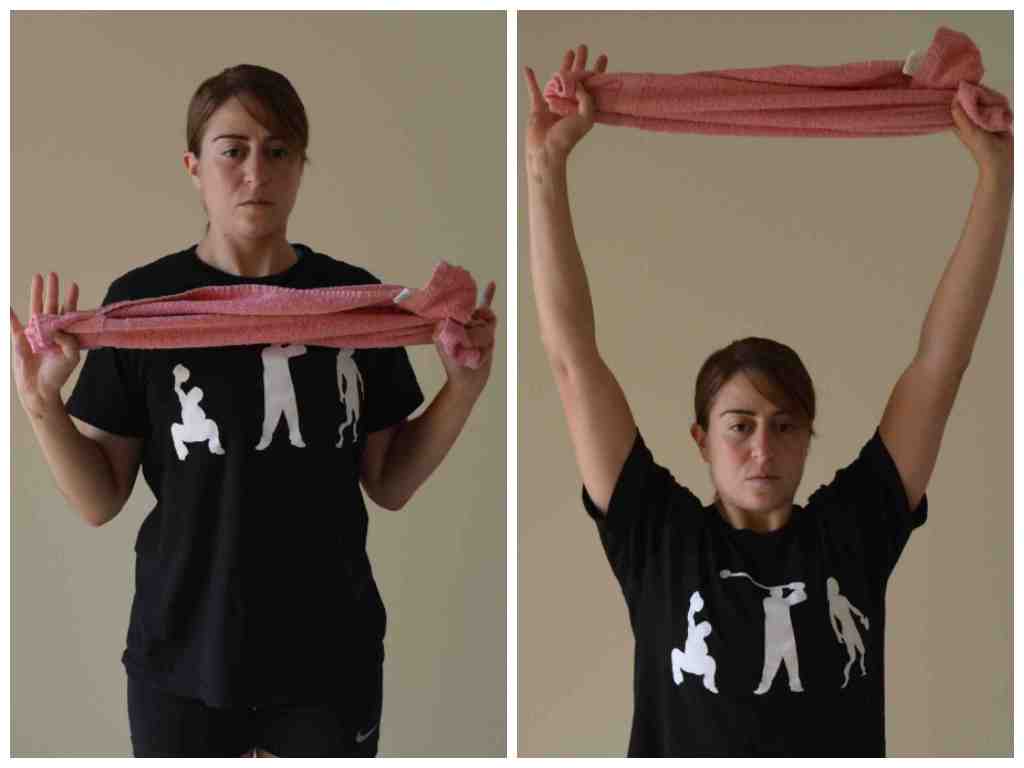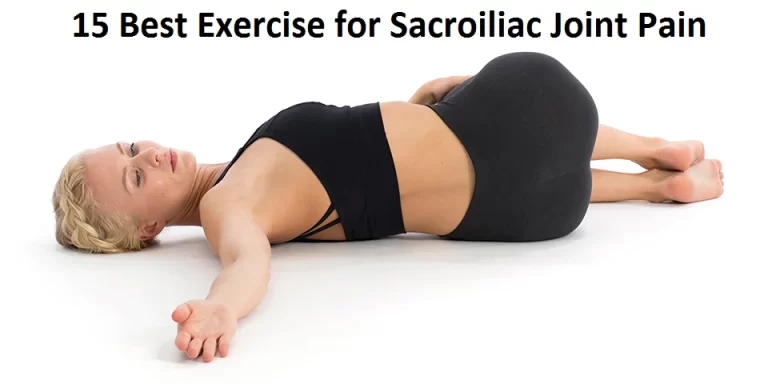Triceps Tendonitis
What is Triceps Tendonitis?
Triceps tendonitis, also known as tricep tendinitis, is a condition characterized by inflammation and irritation of the triceps tendon. The triceps tendon is a thick band of connective tissue that connects the triceps muscle, located on the back of the upper arm, to the olecranon, which is the bony prominence at the tip of the elbow.
Tendonitis occurs when there is repetitive or excessive use of the triceps muscles, leading to small tears or damage to the tendon. This can result from activities that involve repetitive arm movements, such as weightlifting, throwing, or sports like tennis and golf. It is also common among individuals who engage in activities that require frequent overhead arm movements.
The most prevalent signs of triceps tendonitis are pain and weakness in the triceps, shoulders, or elbows. When using the triceps, such as when pushing with the arm, pain frequently gets worse. Aches in the shoulder, triceps, or elbow may also be present.
Triceps tendon injuries are a rare clinical condition that receives little attention in the literature. The mechanism of damage and the patient’s motor assessment determine how to treat triceps tendinopathies.
Conservative treatment options for triceps tendinopathies and partial tendon tears with preserved strength include rest, ice, immobilization, nonsteroidal anti-inflammatory medications, and physical therapy.
Surgery should be taken into consideration if conservative therapy fails for six months or if an evaluation reveals strength impairments.
Pathophysiology:
Similar to tendinopathies of other tendons, triceps tendinopathy shares the same pathogenesis. The tendon undergoes fibroblast growth after prolonged usage. The outcome is that the fibroblasts release inflammatory and reparative mediators, such as prostaglandin E2, which works to reduce both the production and degradation of collagen in tendons. Stretched tendon fibroblasts also secrete substance P, which causes fibrosis and discomfort. PGE2 and substance P both contribute to tendon thickening, a tendinopathy hallmark.
The osteo-tendon joint of the triceps tendon in the olecranon is where tendonitis of the triceps most frequently develops, although it can also occur in the tendon itself or in the myotendinous joint.
Diabetes and endocrine diseases including metabolic syndromes are risk factors that damage the tendon. The injection of corticosteroids, anabolic steroids, and overtraining are local variables that can weaken or injure the tendon, resulting in tendon disease or partial or total rupture of the tendon.
Symptoms of Triceps Tendonitis:
The primary symptom of triceps tendonitis is pain and tenderness at the back of the elbow, near the tip, which can radiate down the back of the arm. The pain may worsen with arm movements or when pressure is applied to the affected area. In some cases, there may be swelling or a sensation of warmth around the elbow.
The following are some signs that you could have triceps tendonitis:
- Triceps Muscle Pain: You feel achy in the triceps, shoulder, or elbow region.
- the discomfort you feel when using your triceps
- Your arm has a restricted range of motion.
- a lump or swollen region on the back of your upper arm, just above the elbow
- weakness in or around your shoulder, elbow, or triceps
- a popping sound or sensation immediately after an injury
Causes of Triceps Tendonitis:
- a sudden rise in the difficulty or frequency of a repeated movement
- Triceps muscle tightness: If your triceps muscle is tight, it leads to extra strain on your muscle’s day-to-day activity and leads to muscle/tendon pain.
- improper stretching or warming up, especially prior to exercise or participation in sports
- doing a repeating movement while employing an incorrect technique
- making use of anabolic steroids
- enduring a chronic illness, such as rheumatoid arthritis or diabetes
Differential diagnosis:
Olecranon bursitis, posterior impingement syndrome, snapping triceps syndrome, ulnar collateral ligament injury, lateral collateral ligament injury, and, in children, medial epicondyle apophysitis and Panner disease are among the Differential diagnoses to take into account while assessing a patient who may have had a triceps tendon injury.
Treatment of Triceps Tendonitis:
Early diagnosis and appropriate treatment are crucial to prevent the condition from worsening and to promote healing. Rest, ice, compression, and elevation (RICE) are often recommended in the initial stages of triceps tendonitis to reduce inflammation and provide relief. Additionally, avoiding activities that exacerbate the pain and using anti-inflammatory medications may be beneficial.
R – Rest: Avoid actions or motions that might aggravate or harm your triceps tendon more.
I – Ice: To reduce discomfort and swelling, apply ice to the afflicted region for about 20 minutes several times a day.
C – Compression: Until the edema has decreased, compress and support the area using bandages or wraps.
E – Elevate: To reduce swelling, keep the afflicted region elevated above the level of your heart.
Medications:
Corticosteroid injections:
Injections of corticosteroids can aid in reducing discomfort and swelling. The drug will be injected by your doctor into the region surrounding your triceps tendon.
Since repeated steroid injections may weaken the tendon and raise the risk of subsequent damage, this therapy is not advised for tendonitis that has persisted for more than three months.
Platelet-rich plasma (PRP) injection:
For your tendinitis, your doctor can potentially advise a platelet-rich plasma (PRP) injection. In PRP, a sample of your blood is drawn, and the platelets and other blood components involved in healing are separated.
The region surrounding your triceps tendon is then injected with this solution. Due to the low blood supply to tendons, the injection may aid by supplying nutrients to speed up the healing process.
Physical therapy:
Modalities:
- Electric shock (IFT, TENS)
- LASER treatment
Your triceps tendonitis may also be treated with physical therapy. It focuses on using a schedule of selective exercises to help your triceps tendon get stronger and more flexible.
Here are a few straightforward activities you might try. Remember to see your doctor before beginning any of these exercises, since doing specific actions too soon after an accident might make your situation worse.
Elbow bend and straighten:
Form a loose fist with your hands at your sides.
Raise your hands until they are around shoulder height.
Once your hands are back at your sides, gradually drop them while maintaining a straight elbow.
10 to 20 times, then stop.

French stretch:
Clasp your hands together and lift them above your head while standing.
As you try to touch your upper back, drop your hands behind your head while keeping your hands clasped and your elbows near your ears.
Keep the position reduced for 15 to 20 seconds.
From three to six times.

Static triceps stretch:
Your damaged arm should be bent 90 degrees at the elbow. Your palm should be facing inward and your hand should be made into a fist in this posture.
Tighten the triceps muscles at the back of your wounded arm by pressing down with the fist of your bent arm on the open palm of your other hand.
Take a 5-second hold.
Ten times, tighten your triceps as much as possible without experiencing any discomfort.

Towel resistance:
Each of your hands should be holding one end of a towel.
As you stand, place the wounded arm over your head and the uninjured arm behind your back.
As you raise your hurt arm towards the ceiling, gently draw the towel down with the other hand.
For ten seconds, maintain the posture.
Ten times in total.

If left untreated or if the overuse of the triceps continues, triceps tendonitis can become chronic and lead to further complications. In severe cases, the tendon may develop small tears or even rupture, requiring more extensive treatment options, such as physical therapy or, in rare instances, surgical intervention.
Surgery:
More conservative methods of treating triceps tendonitis, such as rest, medication, and physical therapy, are recommended.
However, surgery may be necessary to restore your injured triceps tendon if the damage is extensive or if previous treatments have failed. This is frequently advised when the tendon is ripped entirely or partly.
Tendon repair:
The goal of triceps tendon repair is to restore the injured tendon to the olecranon, which is a part of your elbow. One of the long bones in your forearm, the ulna, contains the olecranon. Typically, general anesthesia is used throughout the procedure, rendering you asleep throughout.
An incision is done while immobilizing the injured arm. After the damaged tendon has been properly exposed, bone anchors or suture anchors are inserted into the bone to link the tendon to the olecranon using sutures.
It is essential to consult a healthcare professional for an accurate diagnosis and a tailored treatment plan based on the severity of the triceps tendonitis and the individual’s specific needs. Early intervention, proper rest, and targeted rehabilitation exercises can significantly improve the outcome and help individuals return to their regular activities without pain or discomfort.
Summary:
The most prevalent signs of triceps tendonitis are pain and weakness in the triceps, shoulders, or elbows. When using the triceps, such as when pushing or with the arm, pain frequently gets worse. Aches in the shoulder, triceps, or elbow may also be present.
Triceps tendon injuries are a rare clinical condition that receives little attention in the literature. The mechanism of damage and the patient’s motor assessment determine how to treat triceps tendinopathies.
Conservative treatment options for triceps tendinopathies and partial tendon tears with preserved strength include rest, ice, immobilization, nonsteroidal anti-inflammatory medications, and physical therapy.
Surgery should be taken into consideration if conservative therapy fails for six months or if an evaluation reveals strength impairments. The “best” surgical method is not yet clearly defined based on the available research.
FAQs
How is tricep tendonitis managed?
Conservative treatment options for triceps tendinopathies and partial tendon tears with preserved strength include rest, ice, immobilization, nonsteroidal anti-inflammatory medications, and physical therapy. Surgery should be taken into consideration if conservative therapy fails for six months or if an evaluation reveals strength impairments.
How long does it take for tricep tendonitis to recover?
The tendon typically recovers in four to six weeks since the majority of triceps tendonitis cases are non-operatively managed. By properly warming up prior to play and applying ice to the injured elbow if it bothers after exercise, athletes may also help prevent subsequent injuries.
Is tricep tendonitis reversible?
Rest is frequently all that is needed to alleviate triceps tendonitis. The pain may occasionally need to be treated with medicine.
Could you exercise with rear arm muscle tendonitis?
The culpable movement, first and foremost, ought to be kept away from, altered, or diminished. For instance, when it comes to weightlifters, we recommend doing bench presses and shoulder presses—common pushing exercises performed in the gym—at a lighter weight. Here and there, changing shoulder and chest activities can help.
Is heat great for rear arm muscle tendonitis?
Heat may be more beneficial for chronic tendon pain, also known as tendinopathy or tendinosis. Heat has the ability to increase blood flow, which may aid in tendon healing. Heat additionally loosens up muscles, which can assuage torment.








2 Comments